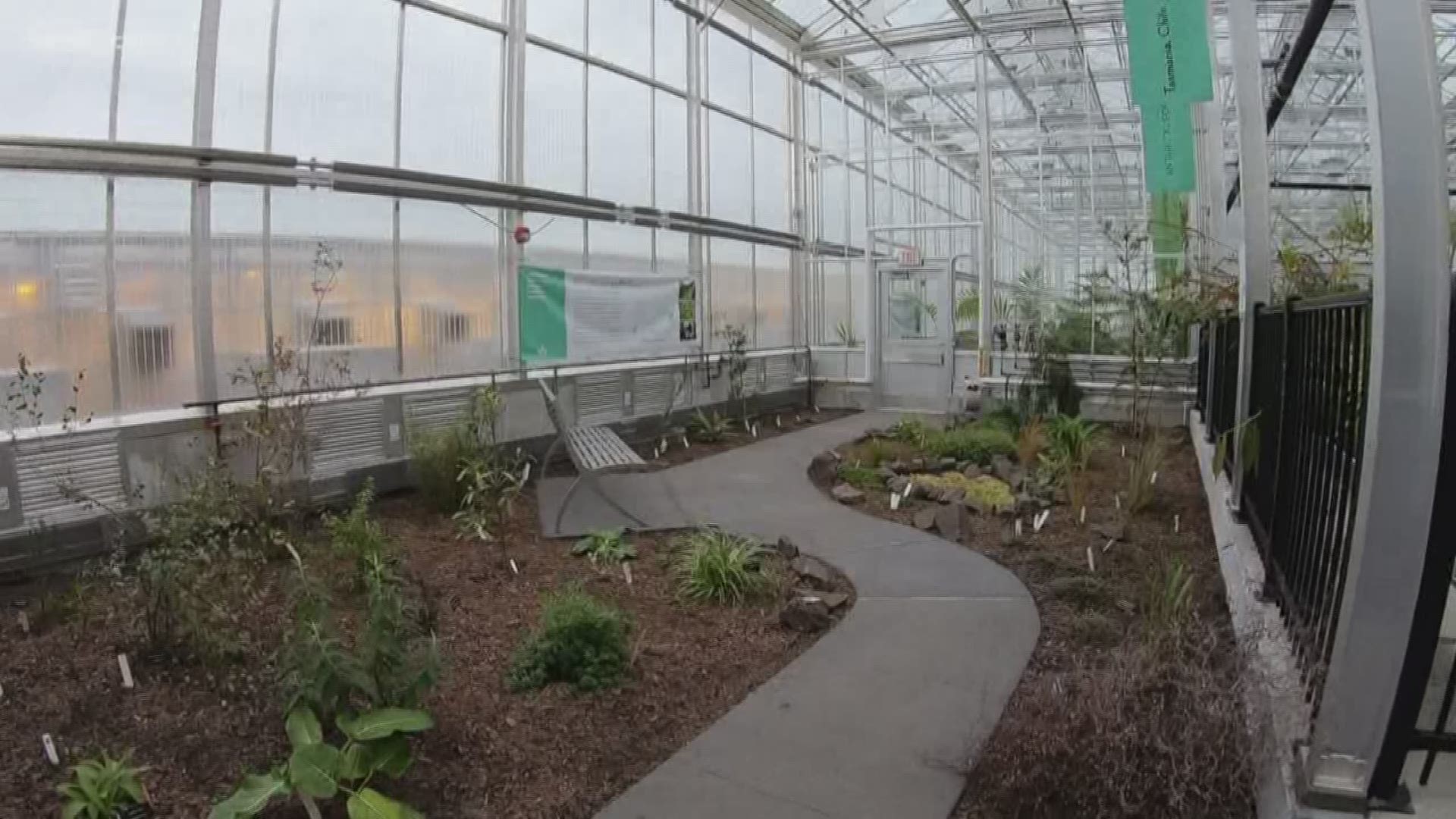MINNEAPOLIS — Bobby and I chatted with Lisa Philander, Curator of the University of Minnesota's College of Biological Sciences Conservatory and Botanical Collection. (That's a mouthful!)
The Conservatory is about two-thirds research and one-third public space. The public space is a walking path through the glass building that directs visitors through four biomes, each representing a climate in need of conservation.
Those four biomes are Antarctic forest, diverse deserts, Mediterranean scrubland and ancient rainforest.
Walking through gives a noticeable change in temperature, humidity, visuals and even smell.
The desert biome in particular hosts the only collection of Somali plants under glass in the world. And the ancient rainforest is home to the first-flowering species known to have bloomed in earth. Each and every flowering plant we know today is a descendant of this plant.
First question Bobby asks is "What do you hope the public will get out of this place?"
Lisa answers, "We hope that they will be exposed to different plants that they've never seen before and be exposed to different biomes. Each room is designed to have an ecological story embedded within it."
Laura: Why did you choose these four biomes?
Lisa: We are very cognizant of conservation issues. In the northern Hemisphere there's a lot more funding and resources available. So we chose places that have high botanical diversity and high need for conservation.
Laura: What's happening on the research side:
Lisa: Our main priority is to educate students. We allow students to grow their own plants, sometimes dissect plants, sometimes just look and see this is an example of a euphorbia plant.
Laura: What will this place look like in five years?
Lisa: Well hopefully it will be filled up with trees. Some plants will be waist high with a variety of flowers.
The Conservatory will be open to the public but the opening date has been pushed back to at least early June. Check with the Conservatory directly for more information on when it will open to the public.
RELATED: Grow with KARE: Gardening trends
RELATED: Grow with KARE: Tangletown Farm Tour

